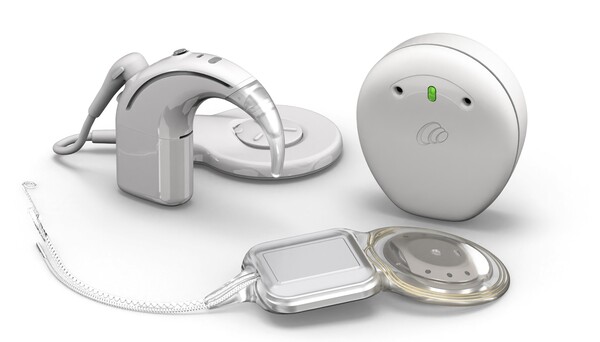Cochlear has launched its new smart cochlear implant system, Cochlear Nucleus Nexa System, which is designed and manufactured in Australia.
Cochlear Chief Technology Officer, Jan Janssen, said, “The Nucleus Nexa System combines 40+ years of proven reliability of our trusted implants and technology leadership, with a new cutting-edge chipset called NEXOS, which is packed with innovative features. With onboard diagnostics that monitor system performance to ensure optimal hearing, it reduces the burden on users and carers, setting a new standard in implantable hearing technology.”
"The new chipset powers the implant, enabling the smart features of the system and it will serve as the platform for Cochlear’s future smart implant innovations. The technology advancements offered in the Nucleus Nexa System are built on more than 10 years of intensive research and development,” said Janssen.
The Nucleus Nexa System offers the world’s first hearing implant solution with upgradeable implant firmware, revolutionising the way people with hearing loss can access future technology.
Conventional cochlear implants available today can only access future innovation by upgrading their sound processor. With the Nucleus Nexa System, people can experience new features and advancements through both firmware updates in their smart implant and upgrades to their sound processor over time.
“This is the first cochlear implant with its own firmware, so the device can be upgraded to new features and advancements throughout the user’s lifetime. Just like a smartphone receives a firmware update, now people with a Cochlear implant can stay connected to the latest technology updates today and well into the future,” said Janssen.
The Nucleus Nexa System is also the first implant with built-in memory, allowing the user's personalised hearing settings (MAPs) to be securely stored directly in their Nexa implant. This ensures users can transfer their settings to a new Nucleus Nexa Sound Processor if their current one is lost or damaged.
“We designed the new System with the goal to deliver better solutions to our customers today and into the future. The Nucleus Nexa System comes with a distinct advantage, allowing users’ personalised hearing settings (MAPS) to be stored securely in the implant’s in-built memory. This advancement offers unmatched convenience and efficiency both for the user and the clinician,” said Janssen.
“Previously, if a user misplaced or damaged their sound processor, they would need to visit a clinic to obtain a replacement sound processor. This replacement device would need to be programmed with the user’s personalised hearing settings in the clinic by a cochlear implant professional, taking valuable time from both the professional and the user. With the brand-new ‘Smart Sync’ feature, the user simply needs to pick-up or receive a 'blank' sound processor and the personalised settings are automatically copied to the replacement sound processor allowing a person to hear with their cochlear implant again in a matter of seconds,” said Janssen.
The Nucleus Nexa System can automatically adjust listening to help people hear more clearly. The Nexa implant also features a new gold implant coil and new RF Link technology with dynamic power management. This facilitates more efficient power and data transfer between the sound processor and the implant and automatically maximises battery life for each user.
Professor Robert Briggs, Director of the Cochlear Implant Program, Royal Victorian Eye and Ear Hospital, said, “Hearing loss affects so many areas of a person’s life from employment, social interaction, relationships and well-being. For Australians with hearing loss, it is important for you to speak to your hearing health professional to see what options are available to you.”
Stu Sayers, President of Asia Pacific and Latin America at Cochlear, added, “We are driven by a passion for progress; to help people hear and be heard. This is why we have a proud history of being first to bring industry-leading technology to people with hearing loss. Most importantly, we are excited by the potential of this next-generation technology to improve the experience and outcomes for people living with hearing loss today and well into the future.”
